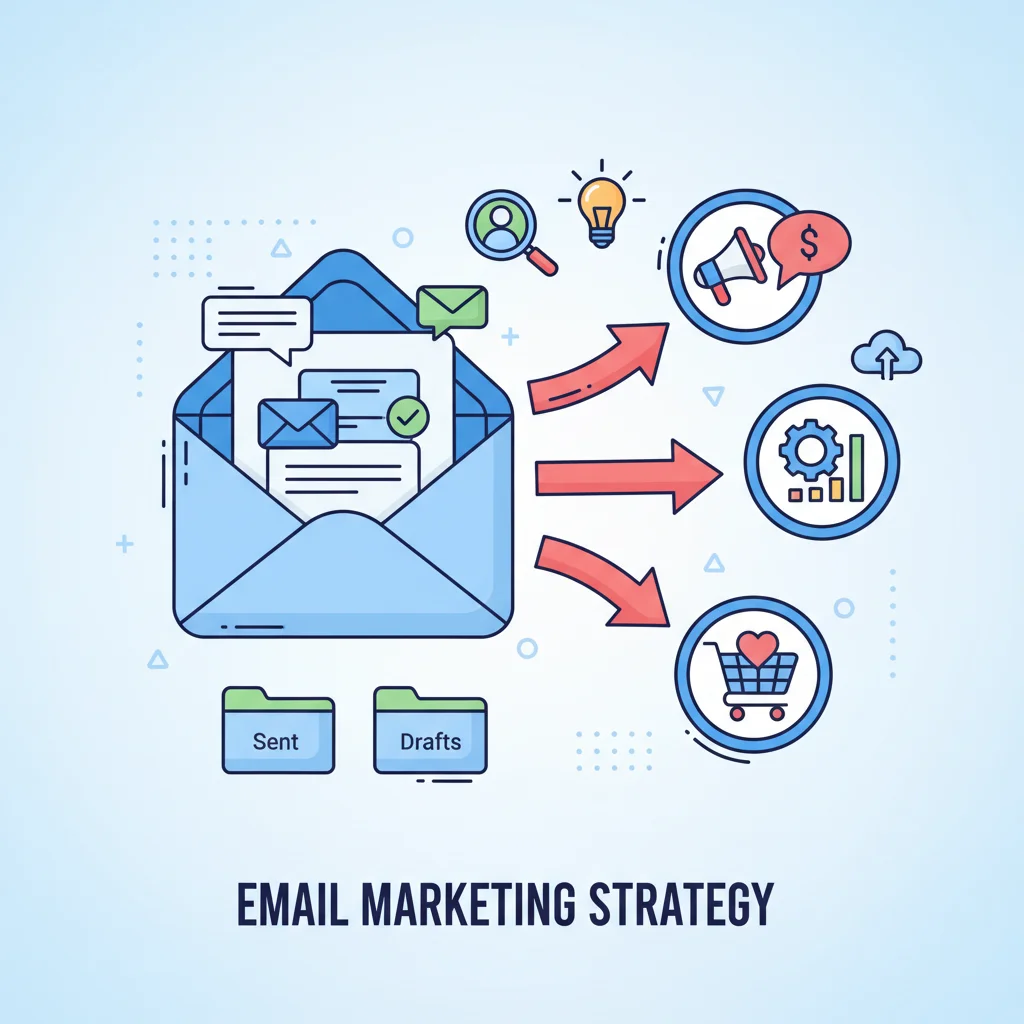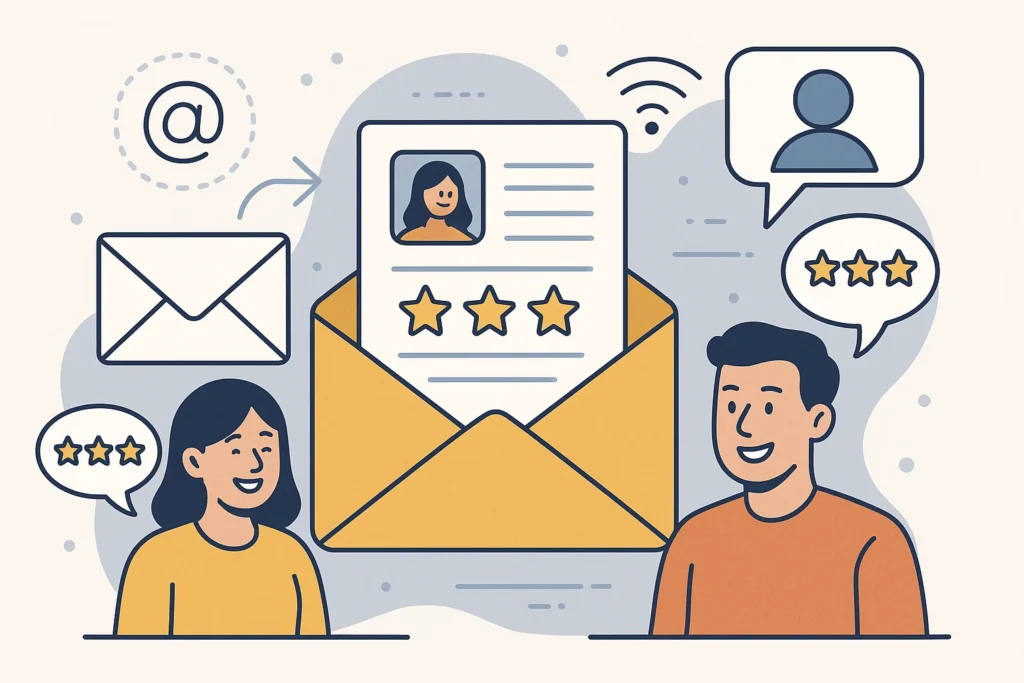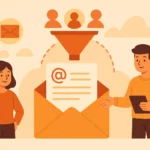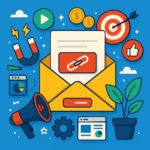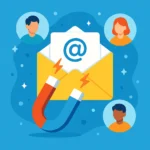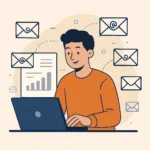Now Reading: Profitable Email Marketing For Affiliate Promotion Guides
-
01
Profitable Email Marketing For Affiliate Promotion Guides
Profitable Email Marketing For Affiliate Promotion Guides
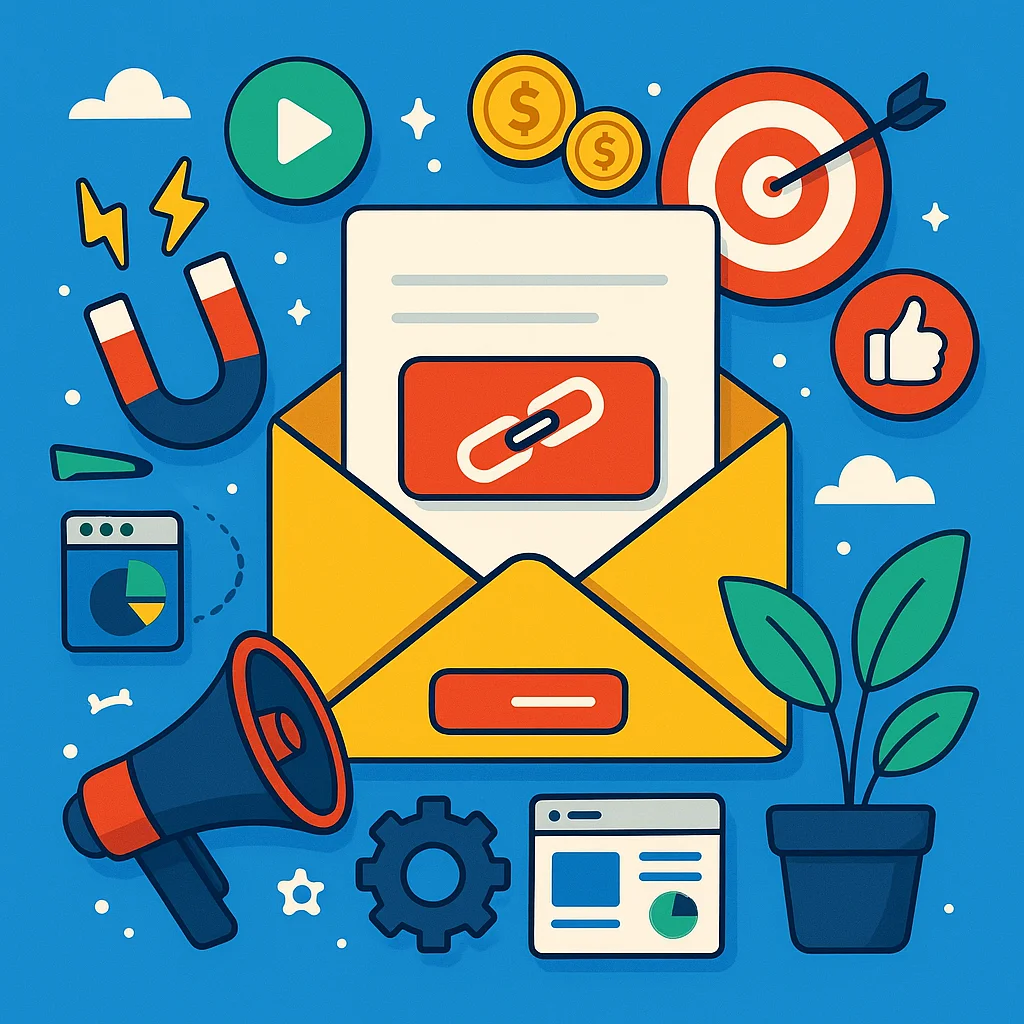
Your affiliate links are sitting there like wallflowers at a high school dance – ignored, overlooked, and definitely not making you any money. You’ve tried posting on social media, writing blog posts, maybe even paid for some ads. But here’s the thing: you’re missing out on the most powerful tool in your arsenal. Email marketing for affiliate promotion isn’t just another marketing tactic – it’s your secret weapon for turning subscribers into buyers and browsers into believers.
Key Takeaways
Email marketing for affiliate promotion works by building trust with your audience through valuable content, then strategically introducing affiliate products that solve their problems. Here’s what you need to know:
- Build relationships first, sell second – Use the 80/20 rule: 80% valuable content, 20% promotional emails
- Segment your audience based on interests and behaviors to send targeted affiliate promotions
- Use email sequences to guide subscribers from awareness to purchase over multiple touchpoints
- Personalize your messages beyond just using names – tailor content to subscriber preferences and past interactions
- Test different approaches including subject lines, email timing, and call-to-action placement
- Focus on solving problems rather than just pushing products – position affiliate items as solutions
- Leverage seasonal campaigns and exclusive offers to create urgency and drive conversions
- Track performance metrics like open rates, click-through rates, and conversion rates to optimize campaigns
Building Your Foundation For Email Marketing Success
Let’s get real about something: affiliate marketing without email is like trying to fill a bucket with holes in it. You might catch some water, but most of it’s gonna leak right out.
Email marketing for affiliate promotion starts with building a solid foundation. You can’t just throw up a “subscribe to my newsletter” form and expect miracles. Your audience needs a compelling reason to hand over their email address.
Creating Irresistible Lead Magnets
Your lead magnet is basically your email list’s pickup line. It better be good, or you’re going home alone.
Think about what keeps your target audience up at night. If you’re in the fitness niche, maybe it’s “5 Fat-Burning Workouts You Can Do in Your Living Room.” For the tech crowd, try “Ultimate Guide to Choosing the Perfect Laptop for Your Needs.”
The magic happens when your lead magnet naturally connects to your affiliate products. If you’re promoting fitness equipment, that workout guide becomes the perfect bridge to recommend specific gear.
Choosing The Right Email Service Provider
Not all email platforms are created equal, especially when it comes to affiliate marketing. You need one that plays nice with affiliate links and won’t flag your emails as spam faster than you can say “commission.”
Look for features like:
- Advanced segmentation capabilities
- Automation workflows
- A/B testing tools
- Reliable deliverability rates
- Affiliate-friendly policies
Some platforms get twitchy about affiliate links, so read the fine print before committing.
The 80/20 Rule That Changes Everything
Here’s where most affiliate marketers mess up big time. They treat their email list like a personal ATM, constantly asking for money without giving anything back.
The 80/20 rule is your salvation. For every promotional email you send, balance it with four emails that provide pure value. This isn’t just being nice – it’s strategic.
What “Value” Actually Means
Value doesn’t mean writing a novel about your morning coffee routine. Your subscribers want content that makes their lives better, easier, or more interesting.
Try these value-packed email ideas:
- Industry insights and trends
- How-to tutorials and tips
- Behind-the-scenes content
- Curated resources and tools
- Personal stories with lessons learned
When you consistently deliver value, your promotional emails don’t feel like interruptions – they feel like recommendations from a trusted friend.
The Psychology Behind Give, Give, Give, Take
This pattern works because it builds what psychologists call “reciprocity.” When you consistently help people, they naturally want to help you back. Plus, it keeps your email engagement rates high, which means more of your emails actually reach inboxes instead of spam folders.
Useful Articles:
Crafting Email Sequences That Convert
Random emails don’t build relationships – sequences do. Think of email sequences as your chance to take subscribers on a journey from “who are you?” to “take my money!”
The Welcome Series That Sets The Stage
Your welcome email is like a first date. Make it count, but don’t propose marriage.
Here’s a simple welcome email template:
Subject: Welcome! Here's what happens next...
Hi [First Name],
Thanks for joining my community! I'm genuinely excited to have you here.
Over the next few days, I'll be sharing some of my best tips for [relevant topic]. No fluff, no filler – just actionable stuff you can use right away.
First up: [mention your lead magnet or first value piece]
Talk soon,
[Your name]
P.S. Hit reply and let me know what your biggest challenge is with [relevant topic]. I read every email!The Problem-Solution Sequence
This is where email marketing for affiliate promotion gets interesting. You’re not just selling products – you’re solving problems.
Here’s a 6-email sequence that works:
Email 1: Welcome and set expectations
Email 2: Identify a specific problem your audience faces
Email 3: Agitate that problem (make them feel it)
Email 4: Introduce your solution (with affiliate link)
Email 5: Handle objections and provide social proof
Email 6: Create urgency and final call-to-action
The Educational Series Approach
Sometimes the best way to promote affiliate products is to educate first. If you’re promoting marketing tools, create a series about building an online business. Naturally weave in tool recommendations as part of the education.
Segmentation Strategies That Actually Work
Sending the same email to your entire list is like using a megaphone when you should be having a conversation.
Basic Segmentation Categories
Start simple:
- Interest-based segments: Group people by what they’re interested in
- Behavior-based segments: Segment by how they interact with your emails
- Purchase history: Different messages for buyers vs. non-buyers
- Engagement level: Separate your super fans from the lurkers
Advanced Segmentation Tactics
Once you’ve mastered the basics, get fancy:
- Segment by affiliate product categories
- Create segments based on email open times
- Group by geographic location for time-sensitive offers
- Segment by device type (mobile vs. desktop users often behave differently)
Personalization Beyond First Names
“Hi [First Name]” isn’t personalization – it’s basic courtesy. Real personalization means understanding what makes each subscriber tick.
Content Personalization Strategies
Instead of generic product recommendations, try:
- Suggesting products based on previous clicks
- Tailoring content to subscriber’s stated interests
- Adjusting email frequency based on engagement
- Customizing subject lines based on past open behavior
Dynamic Content That Adapts
Modern email platforms let you show different content blocks to different segments within the same email. Use this to show relevant affiliate products to each segment without creating dozens of separate emails.
Subject Lines That Demand Attention
Your subject line is the bouncer at the club – it decides who gets in and who stands outside looking sad.
Proven Subject Line Formulas
Curiosity-driven:
- “The weird trick that doubled my [result]”
- “Why everyone’s talking about [topic]”
- “The [number] mistake that’s costing you money”
Benefit-focused:
- “Get [specific result] in [timeframe]”
- “The fastest way to [achieve goal]”
- “How to [solve problem] without [common obstacle]”
Urgency-based:
- “24 hours left for [offer]”
- “Last chance: [benefit]”
- “Ending tonight: [specific deal]”
Subject Line Testing Strategy
Don’t guess – test. Try these variables:
- Length (short vs. long)
- Emoji usage
- Personalization
- Question vs. statement format
- Urgency vs. curiosity
Email Templates That Convert
Let me share some templates that have consistently worked for email marketing for affiliate promotion.
The Problem-Solution Template
Subject: Struggling with [specific problem]?
Hi [First Name],
I got an email yesterday from a subscriber who said:
"I've been trying to [achieve goal] for months, but I keep hitting the same wall with [specific problem]."
Sound familiar?
Here's the thing – [specific problem] trips up almost everyone when they're starting out. I struggled with it too.
But there's a solution that most people don't know about: [introduce affiliate product naturally]
[Brief explanation of how it solves the problem]
I've been using [product] for [timeframe] and it's completely changed how I approach [relevant task].
Want to check it out? [affiliate link]
[Your name]
P.S. [Product] is offering [specific bonus/discount] this week, but only until [date].The Story-Driven Template
Subject: How I finally cracked the code
Hi [First Name],
Two years ago, I was exactly where you might be right now.
I was spending hours every day trying to [achieve goal], but getting nowhere fast. Frustrating doesn't even begin to cover it.
Then I discovered [affiliate product], and everything changed.
[Tell specific story about transformation]
The best part? [Specific benefit that resonates with audience]
If you're tired of [specific frustration], you might want to give [product] a try: [affiliate link]
[Your name]The Social Proof Template
Subject: "This changed everything for me"
Hi [First Name],
I love getting emails like this one from Sarah:
"[Your name], I just had to tell you – [affiliate product] has been a game-changer. In just [timeframe], I've [specific result]. Thank you for the recommendation!"
Sarah's not alone. I've heard similar stories from dozens of subscribers who've tried [product].
Here's what makes it special: [key differentiator]
If you want to see results like Sarah's, check it out here: [affiliate link]
[Your name]Useful Articles:
Timing And Frequency Optimization
When you send emails matters almost as much as what you send.
Finding Your Sweet Spot
Most affiliate marketers either email too much (and annoy people) or too little (and get forgotten). The sweet spot depends on your audience, but here’s a good starting point:
- Value emails: 2-3 times per week
- Promotional emails: Once per week maximum
- Special campaigns: As needed, but sparingly
Day And Time Testing
Different audiences have different email habits. Test these variables:
- Day of the week (Tuesday-Thursday often perform best)
- Time of day (morning vs. evening)
- Weekend vs. weekday performance
- Holiday and seasonal timing
Seasonal And Holiday Campaigns
Holidays aren’t just for retail stores. Smart affiliate marketers use seasonal campaigns to boost conversions.
Planning Your Calendar
Map out major holidays and events relevant to your niche:
- Black Friday/Cyber Monday (universal)
- New Year (fitness, productivity, education)
- Back-to-school (tech, education, organization)
- Summer (travel, outdoor gear, fitness)
Holiday Email Template
Subject: [Holiday] special – but only for my subscribers
Hi [First Name],
While everyone else is fighting crowds at the mall, I've got something better for you.
[Affiliate partner] is offering an exclusive [discount/bonus] for [holiday], but only through my link.
Here's what you get:
* [Specific benefit 1]
* [Specific benefit 2]
* [Specific benefit 3]
This deal ends [specific date/time], so don't wait around.
Grab it here: [affiliate link]
Happy [holiday]!
[Your name]Advanced Automation Strategies
Set up your email marketing for affiliate promotion to work while you sleep.
Behavioral Trigger Campaigns
Create automated sequences based on subscriber actions:
- Clicked affiliate link but didn’t buy → Follow-up sequence
- Opened multiple emails about topic X → Send related affiliate offer
- Haven’t opened emails in 30 days → Re-engagement campaign
The Abandoned Cart Recovery Approach
Even though you’re not selling directly, you can create “abandoned interest” campaigns for people who clicked your affiliate links but didn’t purchase.
Win-Back Campaigns
Don’t let inactive subscribers just sit there. Create campaigns to re-engage them:
Subject: I miss you (and I think you'll want to see this)
Hi [First Name],
I noticed you haven't opened my emails lately. Maybe I've been boring you?
Or maybe life just got crazy busy. I get it.
But before you go, I wanted to share something that might interest you: [relevant affiliate offer]
[Brief explanation of why it's relevant]
If you're not interested, no worries – just hit unsubscribe and we'll part as friends.
But if this sounds useful, check it out: [affiliate link]
[Your name]List Hygiene And Deliverability
A clean list is a profitable list. Don’t let inactive subscribers drag down your performance.
Regular List Cleaning
- Remove hard bounces immediately
- Segment out non-openers after 90 days
- Send re-engagement campaigns before removing subscribers
- Monitor spam complaints and unsubscribe rates
Deliverability Best Practices
- Use a consistent “from” name and email address
- Avoid spam trigger words in subject lines
- Include a clear unsubscribe link
- Monitor your sender reputation
- Authenticate your domain with SPF, DKIM, and DMARC
Testing And Optimization Strategies
What works for other affiliate marketers might flop for your audience. Test everything.
A/B Testing Essentials
Start with these high-impact tests:
- Subject lines (biggest impact on open rates)
- Call-to-action buttons (affects click-through rates)
- Email length (short vs. long-form content)
- Send times (find when your audience is most active)
Multivariate Testing
Once you’ve mastered A/B testing, try testing multiple variables simultaneously:
- Subject line + send time
- Email design + call-to-action placement
- Content type + personalization level
Useful Articles:
Building Trust And Authority
People buy from people they trust. Your emails should position you as a helpful expert, not a pushy salesperson.
Establishing Credibility
- Share your own experiences with products (both good and bad)
- Provide honest reviews, including cons
- Disclose affiliate relationships transparently
- Back up claims with data and examples
The Transparency Advantage
Don’t hide the fact that you earn commissions. Most people understand how affiliate marketing works, and being upfront about it actually builds trust.
Try adding this to your emails:
“Quick note: This email contains affiliate links, which means I earn a small commission if you purchase through my link (at no extra cost to you). I only recommend products I genuinely use and believe in.”
Mobile Optimization Essentials
More than half your subscribers probably read emails on mobile devices. If your emails look terrible on phones, you’re losing money.
Mobile-Friendly Design Tips
- Keep subject lines under 40 characters
- Use single-column layouts
- Make buttons finger-friendly (at least 44px tall)
- Keep paragraphs short (2-3 sentences max)
- Use larger fonts (at least 14px)
Testing Across Devices
Don’t just check your emails on your phone. Test across:
- Different email clients (Gmail, Apple Mail, Outlook)
- Various screen sizes
- Both portrait and landscape orientations
Compliance And Legal Considerations
Nobody wants to deal with legal issues, but you can’t ignore them.
CAN-SPAM Compliance
- Include your physical address in emails
- Provide a clear unsubscribe mechanism
- Honor unsubscribe requests within 10 days
- Don’t use deceptive subject lines
- Identify yourself clearly as the sender
GDPR Considerations
If you have European subscribers:
- Get explicit consent for email marketing
- Allow people to access their data
- Provide easy data deletion options
- Document your consent process
FTC Disclosure Requirements
- Clearly disclose affiliate relationships
- Make disclosures prominent and easy to understand
- Don’t bury disclosures in fine print
- Include disclosures in the email itself, not just on landing pages
Scaling Your Email Marketing Efforts
Once you’ve got the basics down, it’s time to scale up your email marketing for affiliate promotion.
Automation At Scale
- Create multiple email sequences for different audience segments
- Set up behavioral triggers for various actions
- Use dynamic content to personalize at scale
- Implement lead scoring to identify your hottest prospects
Team Building Considerations
As you grow, you might need help with:
- Content creation and copywriting
- Email design and template creation
- List management and segmentation
- Performance analysis and optimization
Technology Stack Optimization
Invest in tools that grow with you:
- Advanced email marketing platforms
- Customer relationship management (CRM) systems
- Analytics and tracking tools
- Landing page builders
Email marketing for affiliate promotion isn’t just another marketing channel – it’s your direct line to building relationships that convert. Start with the basics, test everything, and always put your audience’s needs first. When you nail this approach, you’ll have a sustainable income stream that compounds over time.


